Time: 5:59 – 7:19PM, 9/29/19
My sit-spot is in my backyard right on the edge of the forest. I saw and heard all sorts of neat things during my quiet observation. I had decided beforehand that I wanted to try to watch
individual ants for as long as I could see them. The first ant I saw was by itself, small, with a red tinge to it. It was rambling across one of the stones at my sit-spot. It didn’t seem to be doing anything in particular other than exploring the stone. I was only able to watch it for maybe 30-60 seconds before it disappeared under the stone. A minute or so later my eye was caught by a small line of ants crawling across the leaf litter and over a stone. These ants are definitely a different species than the first one as they are larger (medium-sized) and black in color. I could never really tell where they were coming or going from but clearly on a mission, doing something collectively as a group. They finally disappeared so I moved on to looking at other things. A few minutes later though, I happened to notice more ants, I think the same species as the group I’d see before. They seemed to be in a tizzy about something in the leaf litter. Around that same time, a yellow jacket came flying around and also seemed especially interested in that particular spot. I felt like something must be dead just under the leaf litter that was bringing both the ants and the yellow jacket to the area. But what?! I knew for sure that come time to get up and investigate my spot that I’d be looking there to see what all the fuss was about.
Meanwhile, in other observations, so many leaves have fallen since my last observation! My chair was covered in leaves when I arrived (I purposely left it there so that I could have the exact same vantage point for each session and so that wildlife could at least get used to the chair being there). There are also noticeably more leaves on the ground. There were also a number of black walnuts on the ground that weren’t there before (see photo); a storm came through last night (the first in several weeks!) and clearly brought some winds with it as many walnuts are down in our backyard and even a few large branches.While the walnuts made sense as my sit-spot is under a
giant walnut tree, what was out of place was a chestnut (see photo)! I do have a Chinese chestnut tree in my yard but it is a fair distance from my sit
spot. Thus, something (a squirrel perhaps?) clearly carried the chestnut over here—pretty neat!
Lastly, in looking up at the tree canopy, it’s clear that the trees are beginning to drop their leaves. The black walnut sapling right over me has almost no leaves left. While trees are likely beginning to drop their leaves as the seasons change to fall, I do think that more leaves have fallen than normal due to drought stress. It has been SO dry! And looking at this black walnut, for example, the few leaves that are left are turning a mottled yellow with some dead spots forming on the leaves. Meanwhile, the ash sapling nearby has entire leaves that are just brown (see photo)—that is not fall, that is drought! The poor ash
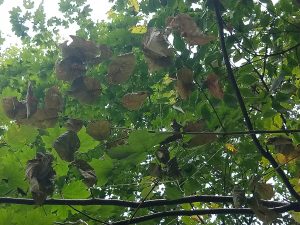
The poor ash sapling had entire leaves that are turning brown, presumably due to drought stress. You can see a few of the black walnut leaves peaking out behind that are turning yellow with brown splotches.
seems to have had a particularly bad week as its lowest branch I noticed had been snapped from the trunk (see photo). What would have done that? I’m thinking most likely a deer—right height (about 3.5 ft from the ground, smaller branch that could be snapped).
In terms of my 3 things, the moss on my piece of wood has not really changed. Meanwhile, the ferns are doing pretty well—still green and happy. However, they are beginning to get covered with leaves. Lastly, my bush honeysuckle has definitely dropped some of its leaves, I think mostly due to drought stress. That said, it’s producing more and more berries—some green and some already ripe and red.
During the time that I could get up and explore, I went and checked out a few things. First, I went to further examine some of the downed and dead trees to see if close-up I might be able to figure out what they were—maybe be able to find a lone branch with some leaves still on it or something of that nature that I perhaps had been unable to see from my chair. Sadly, I had no luck, but did manage to find 2 ash trees that I had not seen from my chair as they had been obscured by other trees from my normal vantage point. One tree was a small seedling but the other was a sapling, larger than the one closer to my chair and my, it is looking very healthy and happy!
Then, I wanted to check out that spot that the ants and yellow jacket had been so interested in. There wasn’t any activity on the surface of the leaf litter anymore but as I removed a leaf from the area where I thought I remembered the activity being, I saw a lone carapace of a beetle—eureka! As I worked to unroll the leaf a bit more to further reveal its contents, I found it, the rest of the beetle (see photo)! And it was covered in ants who were none too thrilled about my disturbance. I was SO excited, what a rush—I felt like a detective who had been proven right; vindication! It’s amazing the stories and treasures nature has to tell and show you if you just take the time to stop, listen, and observe.
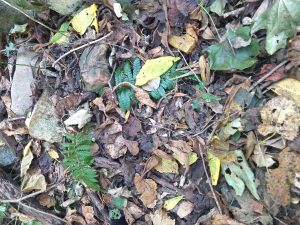
Ferns—another one of my “# things.” Looking healthy but definitely beginning to get covered with leaves.
Overall, I was so happy that I had the chance to actually walk around my spot a little and further examine some things. It worked out especially well since I really wanted to know what was under the leaf litter where the ants were. I had not yet taken the time to walk around my sit-spot as I was trying to be good and a) not disturb it too terribly by my walking through it and b) I know I was going to have this opportunity to walk around it so had decided to wait to do that tonight. I was so happy that I got to as I really wanted to during our first session but restrained myself. It’s obviously not unusual for me to spend a lot of time in the woods but it’s definitely unusual for me to just be sitting in the woods—I’m used to moving around in them, identifying things, and doing field work. There were so many things that I wanted to get up and examine more closely—to touch, to turn over, to try to identify that I needed a closer look at, etc. I was happy that I got to do that tonight and I think it also gave me a better understanding and feel for my sight which I think will also allow me to better observe things next time.
Lastly, for the 3 adaptations that I observed tonight, the first was a sad Rubus sp. that seems to be turning brown and dying BUT it has a very cool and obvious adaptation which are thorns! Of course the thorns are a great defense against herbivores. The second adaptation I observed this evening were the ants working together to locate and bring that beetle back to wherever their home was. So many different adaptations being used to do that—behavioral adaptations, likely chemosensors and pheromones to locate the beetle—just so cool! The third adaptation I observed were the beautiful red berries on the bush honeysuckle. It’s a fleshy fruit (as opposed to a dry fruit) which makes it extra tasty and appealing to dispersers (likely birds in this case). Those berries also don’t turn red until the seeds are mature and ready to actually be dispersed. Before that, they are green and thus well camouflaged from dispersers, being sure that they aren’t visible until the time is right; so cool! So many neat adaptations to ensure that their seeds (e.g. their off-spring) are dispersed far away from the parent plant where it’s more likely to promote genetic diversity within the population and not compete with the parent plant.

The Rubus sp. with its thorns (pardon the low light, it was getting dark. The flash does a nice job of making the thorns visible though!).
I really had a lot of fun finding these adaptations. It’s not something that I consciously walk around with a lens for but once I started looking and thinking, I couldn’t stop seeing them! It was really quite a fun little game.

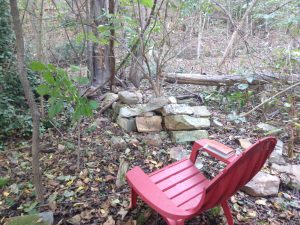
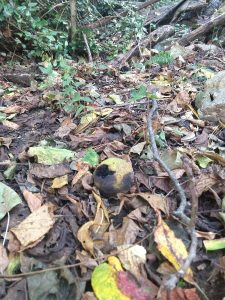
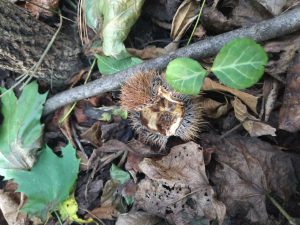
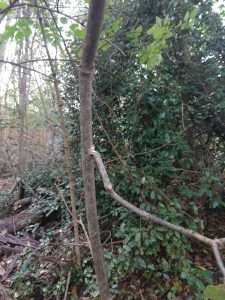
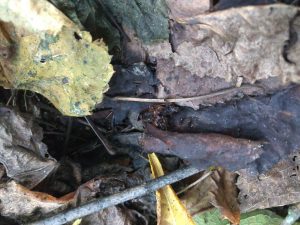
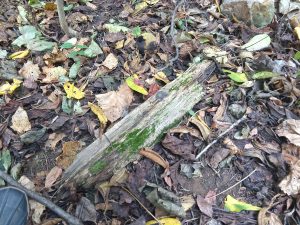
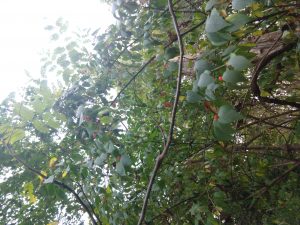
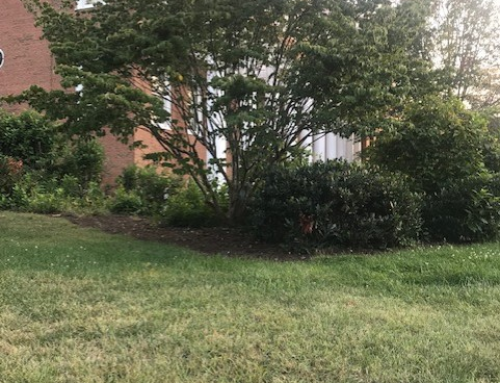
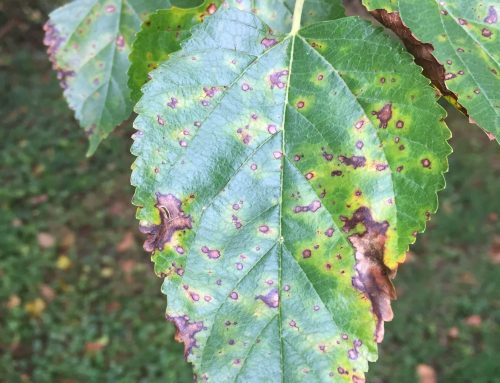
Leave A Comment
You must be logged in to post a comment.